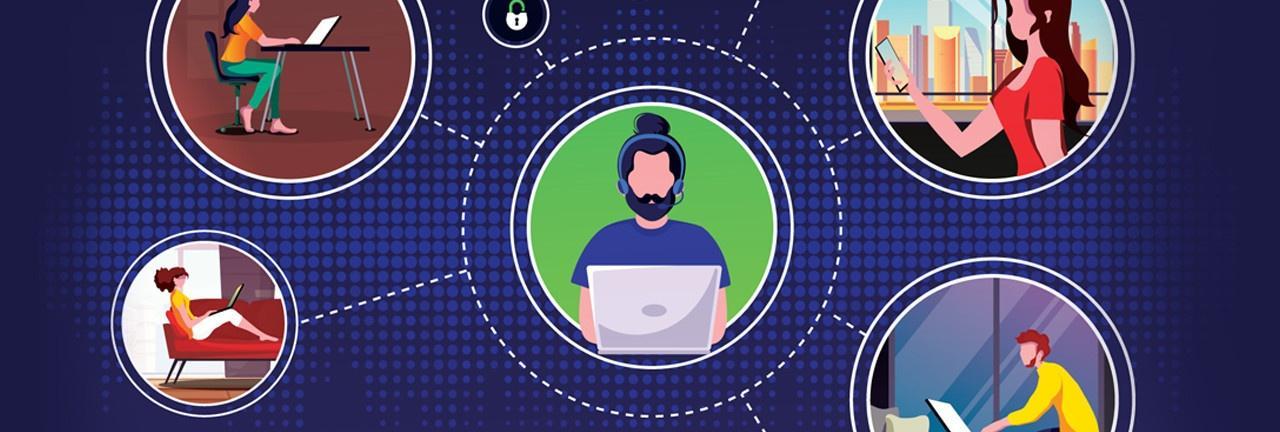The true cost of a poor customer experience, and what it means for your contact centre
Over the course of the past year, the contact centre has been changed forever, with social distancing requirements meaning that familiar methods of face-to-face contact are now unavailable. In light of these shifts, social media, video and email contact are now regularly utilised as the primary channels for customer queries – a trend that we have seen on the rise for some years now. Between March and November 2020, we saw a significant update in the use of online channels, with 54% of organisations reporting an increase in email contact, 52% reporting an increase in social media, and 65% reporting an increase in the use of web chat.
Combined with the majority of contact centre agents now working remotely, points of customer contact are now spread over multiple channels, covering a wide range of geographical locations. This makes building a clear picture of the customer journey a considerable challenge, but one that must not be ignored if these issues are to be resolved and a higher standard of customer satisfaction achieved across all sectors. While many organisations have reported a higher level of staff satisfaction and retention following the rise of remote working, customer satisfaction figures are less encouraging, with 28% of organisations reporting a decline in overall customer satisfaction. Indeed, a January 2021 report from the UKSCI put customer satisfaction across the country at its lowest point since 2015.
Regardless of the channel, a delayed or unsatisfactory resolution to any point of customer contact does not just result in reputational damage, but financial cost as well. It is therefore essential to deliver first-contact resolutions as consistently as possible.
The hidden costs all contact centres must consider
When other methods of contact emerged as competition for the familiar phone call, the assumption among many organisations was that these channels would immediately provide faster resolutions and, in turn, tangible cost savings. However, this quickly proved false, as the lack of automation and access to real-time customer data through these new platforms meant the anticipated first-time resolutions would frequently prove difficult to achieve, costing organisations both time and money.
With this in mind, let's look at the average cost of each customer interaction across the four primary channels:
At the same time, consider that more than 53% of customers cite having to re-explain issues when making contact through multiple platforms as a major source of frustration - a disturbing figure when we see that around 25% of contact centre communications are repeat contacts. As a result, while the average cost per communication may seem negligible, repeat contacts will not only lower customer satisfaction, but may well become an ongoing financial burden.
With customers now expecting omnichannel communication and quick resolutions to their issues, siloed channels of communication are simply no longer viable, which means organisations must fundamentally reconsider their customer contact processes and put technology solutions in place to support this shift in mentality.
Real-time customer data: the lifeblood of the modern contact centre
With demand for first-contact resolutions at an all-time high, it is clear that simply putting these new channels of communication in place is not enough. The modern contact centre must provide agents with everything they need through a single, multichannel platform, including automatic access to customer data at the point of contact, along with the ability to contact internal experts as needed, with automated email replies and chatbots utilised to keep the time-to-answer to the absolute minimum in the event an agent is not available immediately.
Combining true unified communications with intelligent automation was our goal with our own Contact Centre solution, where contact centre agents are able to access all channels of communication through a single platform, regardless of where they are operating from, with all customer data stored securely in the Cloud, and real-time analytics helping paint a clear picture of every stage of the customer journey, highlighting opportunities for further process and service improvements.
In the coming post-COVID world, we expect this model of omnichannel communication to become the norm, with Cloud and communications technology providing the bedrock for fully-integrated customer contact strategies, allowing agents to focus on first-contact resolutions rather than the management of multiple channels. This technology represents a substantial investment in the customer experience that will minimise the ongoing cost of unsuccessful resolutions and - ultimately - result in better customer retention.
When you subscribe to the blog, we will send you an e-mail when there are new updates on the site so you wouldn't miss them.


